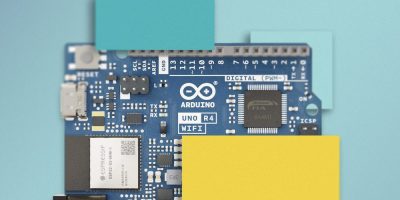Arduino Uno R4 uses 32bit microcontroller to boost performance
The latest addition to Arduino’s Uno family, the Uno R4 is available in two versions, the Uno R4 WiFi and UnoR4 Minima. The Uno R4 WiFi features Wi-Fi and Bluetooth Low Energy connectivity and the UNO R4 Minima provides a cost-effective option for those seeking the new microcontroller without additional features.
The Uno R4 is powered by the Renesas RA4M1 32-bit microcontroller based on the Arm Cortex-M4 core. This, said Arduino, provides “a significant boost” in processing power, memory and functionality, compared to the Uno R3, which will not be discontinued, confirmed Arduino.
The WiFi version comes with an Espressif S3 WiFi module.
The R4 maintains the same form factor, shield compatibility and 5V operating voltage as the R3. Arduino confirmed software compatibility, adding most existing libraries and examples work seamlessly on the R4. Some libraries that were previously optimised for the AVR architecture in R3 may require porting to the new Renesas architecture, advised Arduino.
Support for other Renesas microcontrollers, such as the RL78/G22 and G23, has also been added to the Arduino IDE (integrated development environment).
“We are honoured to collaborate with Arduino on their iconic Uno product line,” said Chris Allexandre, senior vice president, CSMO and head of global sales and marketing at Renesas. “Despite the challenges of this intricate project with a rich legacy, our 5V 32-bit Arm Cortex M4-based microcontrollers . . . . [offer] enhanced performance and resources to unlock endless potential for makers worldwide”.
“We believe that even iconic products must evolve to keep up with the ever-changing needs of our community and technological advancements. While maintaining the Uno R3 in our product line up, we collaborated closely with our partners Renesas and Espressif to create the most compatible and powerful maker board on the market,” says Fabio Violante, CEO at Arduino.
The Arduino Uno R4, featuring the Renesas RA4M1 (Arm Cortex-M4) running at 48MHz, boasts a three-fold performance increase over the Uno R3. SRAM has been upgraded from 2kbyte to 32kbyte and flash memory has increased from 32kbyte to 256kbyte to support increasingly complex projects. The company has also listened to community feedback, changing the USB port to a USB-C port and raising the maximum power supply voltage to 24V with an enhanced thermal design. The board includes a CAN bus and an SPI port, enabling users to reduce wiring and perform parallel tasks by connecting multiple shields. A 12-bit DAC is also on the new board.
To assist with any software transition, Arduino will provide a public list of such libraries, along with links to alternative options. To encourage library developers to port their low-level code to the Renesas architecture, an early adopter program has been launched.
The Arduino UNO R4 is set for release in late May.
Open-source hardware and software company, Arduino, provides an easy-to-use platform for interactive projects. With approximately 30 million active users, the Arduino community has expanded into IoT, wearables, 3D printing, and embedded environments.




